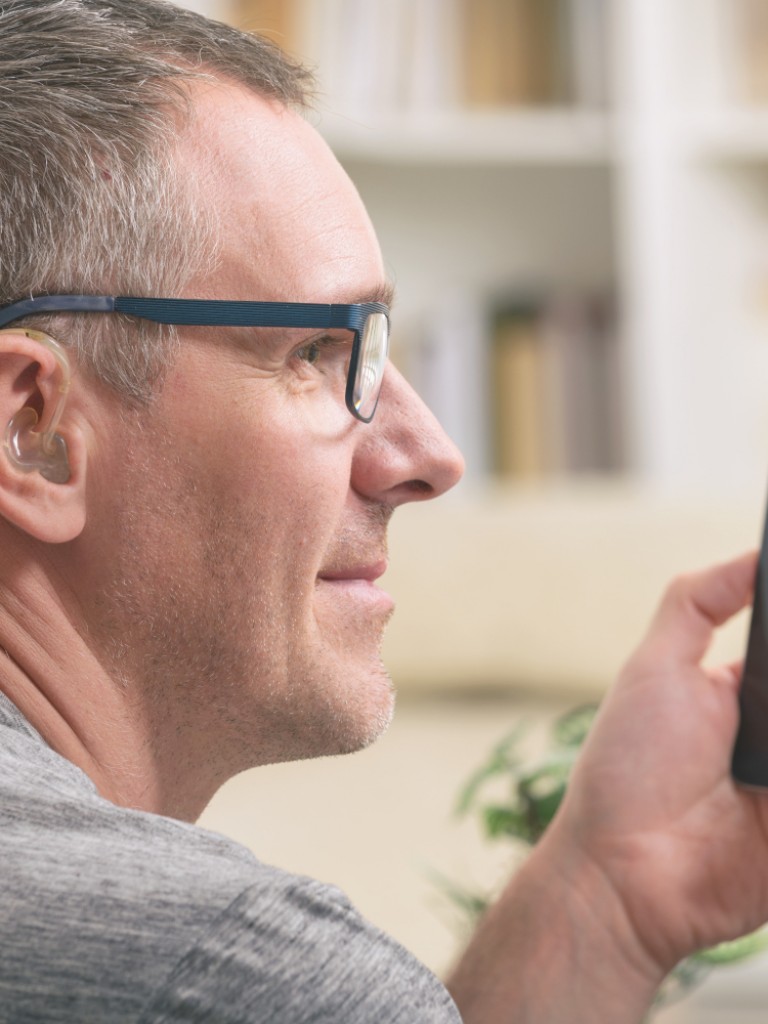The Daily Chime
Latest News

Harry Burridge
Commercial Audiologist
Which hearing aids are best?
Posted on 2023-05-24 08:37:00 in GeneralAnalogue. Digital. Behind the ear. In the Ear. Receiver in the Canal. Private. NHS. The question of which hearing aids are best is a tricky question. There are so many different types of hearing aid to choose from.
Digital Hearing Aids vs. Analogue Hearing Aids
Most providers will now provide digital hearing aids over analogue hearing aids. Digital hearing aids allow for greater tailoring of the hearing aid prescription. In addition, digital hearing aids allow for additional features to be added to the hearing aids such as Bluetooth or directional microphones. Most analogue hearing aids are now considered antiques!
NHS Hearing Aids vs. Private Hearing Aids
If you have a hearing loss, any hearing aid should provide a benefit to your hearing, provided it has been set up by a hearing care professional following best practice guidelines. However, the degree of customisability and the level of technology is what separates the NHS and Private services.
The NHS hearing aids are high quality digital hearing aids that can assist most levels of hearing loss. NHS hearing aid’s will usually be a Behind the Ear (BTE) or Receiver in the canal (RIC) hearing aid. This means you may not have as much choice as you would going privately.
The NHS hearing aids can make an incredible difference to your hearing, but they are limited to a few types and single technology level. To be seen on the NHS, you will often require a doctor’s referral to your local audiology service.
Private hearing aids can cost up to thousands of pounds. With this, you have access to the best technology on the market. With help from your hearing care provider, you would be able to choose the technology level, the style, the manufacturer and much more. Having access to better technology allows your hearing care provider to give you more tools to help with your hearing.
Some aids allow for better hearing in background noise. Others allow for better automatic programming so that the hearing aid can adapt to your environment more naturally. Private hearing aids can even have rechargeable batteries or go completely in the ear. To be seen privately, it is as easy as contacting your chosen hearing care provider.
Receiver in the Canal (RIC) & Behind the Ear (BTE) Hearing Aids with Domes
As of 2023, these types of hearing aids are the most common on the market. Most NHS providers will provide BTE hearing aids with domes as they are suitable for mild to moderate losses (which makes up the greatest percentage of hearing loss in the UK).
This type of hearing aid is great for fitting quickly as it does not require a custom impression of the ear. It uses a slim tube to funnel sound into the ear, which is then sealed by the dome on the end. This hearing aid is poorly suited to someone who struggles with their dexterity.
A receiver in the canal (RIC) hearing aid is usually seen in the private sector but can be available on the NHS depending on your local provider. A RIC with domes is suited to a mild/moderate sloping loss. RIC hearing aids are similar to BTE in shape and function, but the advantage is that part of the hearing aid is built into the ear canal and can allow for better sound quality from the hearing aid.
This type of hearing aid is suitable for most people. It is recommended against for people who make lots of wax or regularly have wet ears (due to infection etc.) as it can get expensive to change parts regularly.
Moulded Receiver in the Canal or Behind the Ear Hearing Aids
Both RIC and BTE hearing aids can be fitted with a custom ear mould which allows for greater amplification, supporting even severe/profound hearing losses. This involves taking a cast of the ear to give use the shape of your ear.
A custom earmold allows for the best fitting of a hearing aid as it is made specifically for you. However, more mild prescriptions may find it tricky to wear as they may find their own voice booming or reverberating in their head. Additionally, an earmold takes a long time to make.
In the Ear or Completely in the Canal Hearing Aids
In the ear (ITE) hearing aids come in many varieties. You can have custom and non-custom variants. Some will be more visible on the outer part of your ear. Others can be completely invisible. A Completely in the canal (CIC) hearing aids do what they say on the tin. The entirety of the hearing aid sits inside your ear. ITE and CIC aids are not commonly available on the NHS.
All these types of hearing aid share the problem that they are limited compared to a BTE or RIC aid. All of the components have to fit within the ear, sometimes compromises on the number of features have to be made, particularly if you have a smaller ear canal. Additionally, ITE aids tend to be a bit harder to handle for those with dexterity issues.
So, which hearing aid is best?
Because there are so many choices, it is best to have your hearing assessed and discuss with your hearing care provider what you are looking for. Just keep in mind that your hearing test results, or your method of service can greatly impact how much choice you have.
The decision to wear hearing aids should always be a two-sided conversation between you and your hearing care professional. Your part in the conversation is to voice your needs and difficulties with hearing. Your hearing care professional’s job is to unpick everything and make recommendations that are most suitable for your hearing loss whilst following best practice guidelines.
The best hearing aid for you is the one that you can wear consistently and without distress or worry.
If you need any more support, please contact our audiology specialists, who will be able to assist you with any hearing queries you may have.

